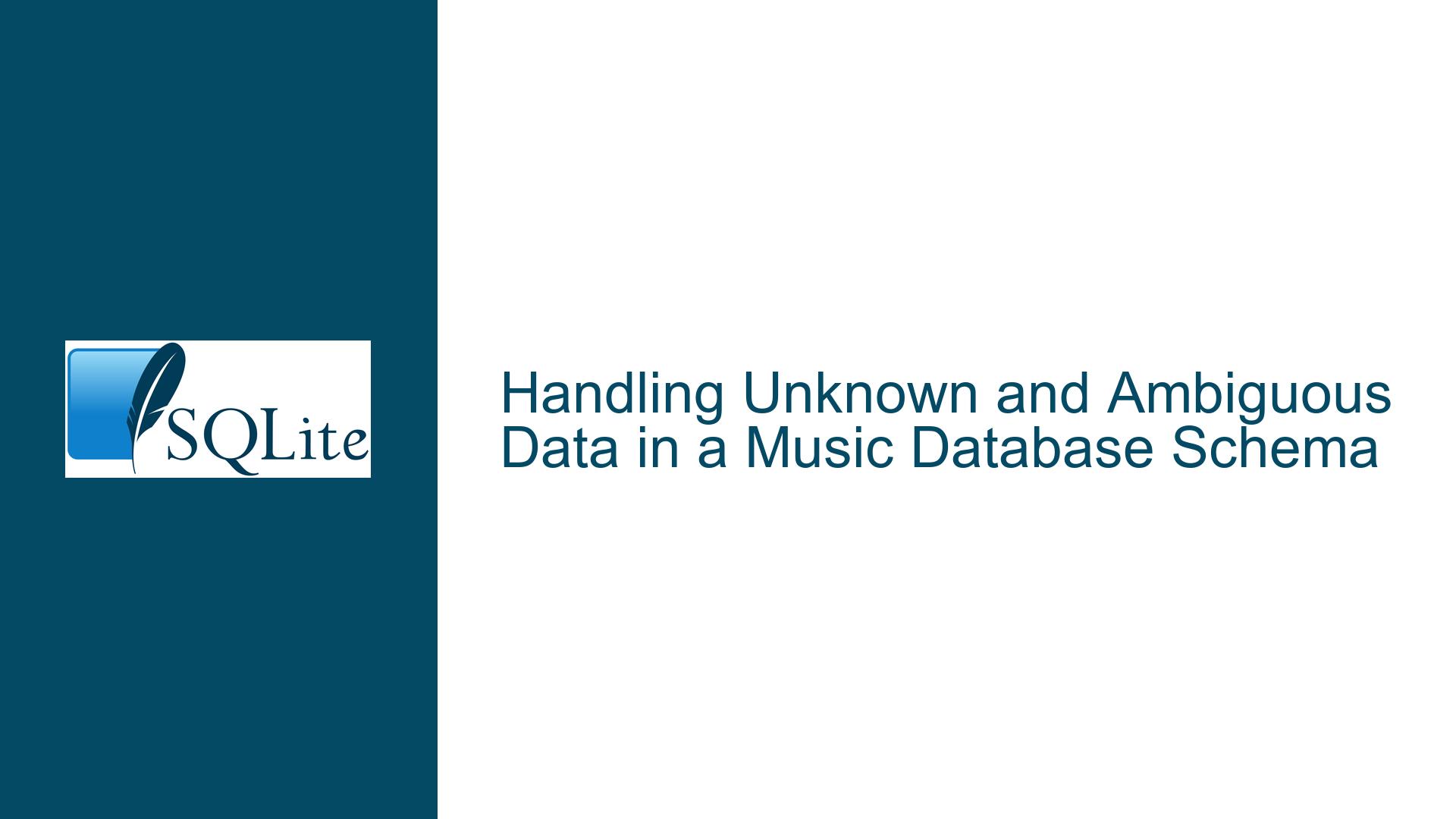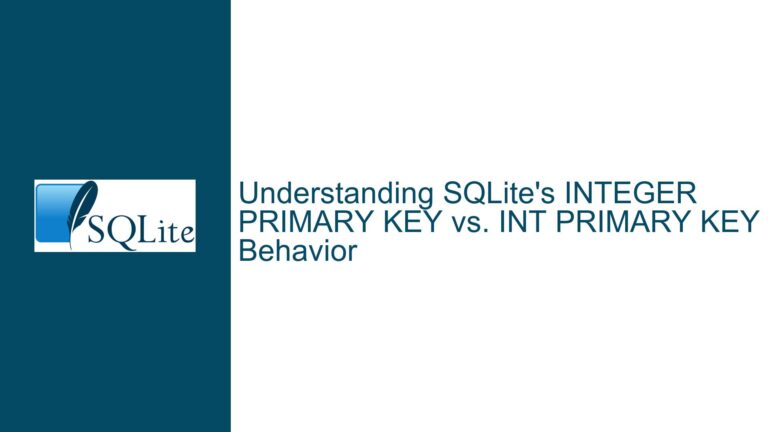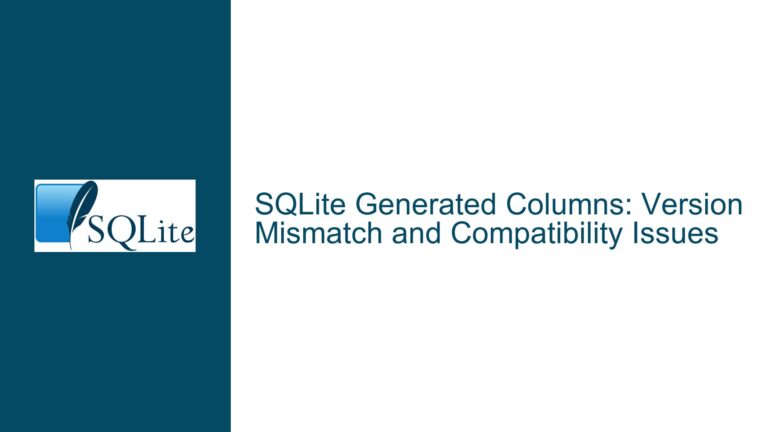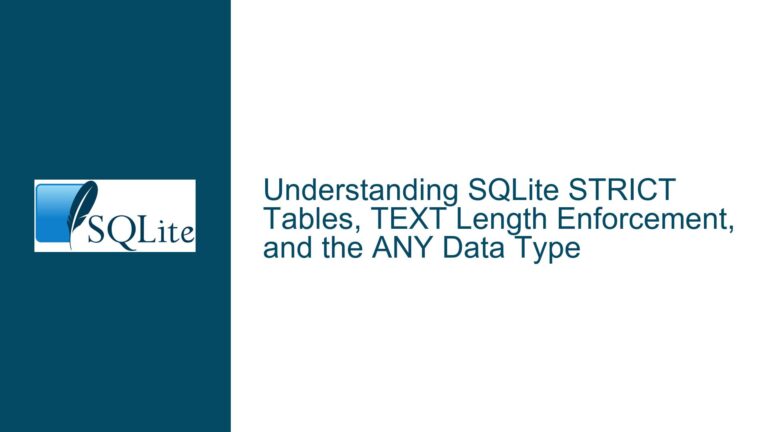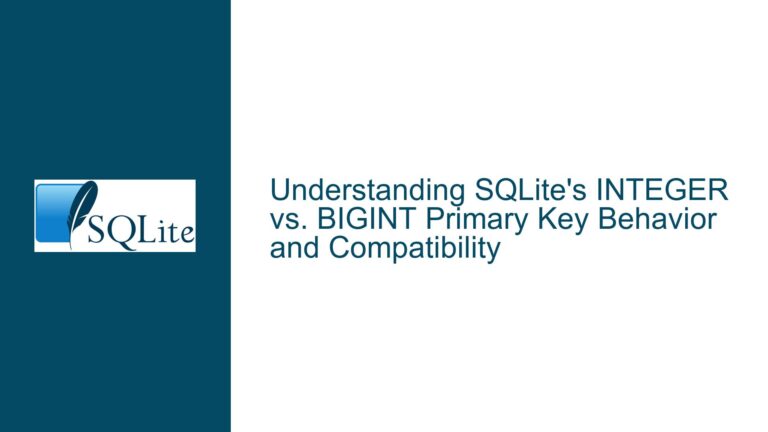Handling Unknown and Ambiguous Data in a Music Database Schema
Issue Overview: Constraints Blocking Genuine Data Entry in Music Databases
When designing a database schema for a music-related application, such as an Artist/Album/Single database, developers often rely on constraints like CHECK and UNIQUE to enforce data integrity. These constraints are essential for maintaining consistency and preventing duplicate or invalid entries. However, real-world data, especially in the context of music, can be messy, ambiguous, or even unknown. This creates a significant challenge when the schema’s constraints inadvertently block the entry of legitimate data.
For instance, consider a scenario where a song’s title, album, or artist is unknown. In such cases, the database schema must accommodate NULL values without conflating them with explicit "Unknown" entries. Additionally, music metadata can include unconventional characters, such as symbols or non-standard text, which may not align with the schema’s constraints. This issue is further complicated when dealing with edge cases like artists who intentionally use untypable or obscure names for their work, making it difficult to standardize data entry.
The problem is not limited to unknown data. Ambiguous data, such as songs with multiple possible titles or albums with varying release versions, can also clash with schema constraints. For example, a song might be known by different names in different regions, or an album might have a special edition with a slightly altered title. These nuances can lead to conflicts with UNIQUE constraints or CHECK conditions designed to enforce uniformity.
Moreover, the issue extends to the display layer of the application. Even if the database schema allows for NULL values or unconventional data, the application must still present this information in a way that distinguishes between genuinely unknown data and data explicitly labeled as "Unknown." This requires careful consideration of both the schema design and the application logic.
Possible Causes: Schema Rigidity and Real-World Data Complexity
The root cause of this issue lies in the inherent tension between schema rigidity and the complexity of real-world data. Schema constraints are designed to enforce rules that ensure data consistency, but these rules can sometimes be too restrictive for the unpredictable nature of music metadata. Below are some specific causes that contribute to this problem:
Overuse of
UNIQUEConstraints: TheUNIQUEconstraint is commonly used to prevent duplicate entries in a table. However, in a music database, this can be problematic. For example, two different songs might share the same title, or an artist might release multiple albums with identical names in different years. Enforcing aUNIQUEconstraint on thetitlecolumn in thesongsoralbumstable could block legitimate entries.Inflexible
CHECKConditions:CHECKconstraints are used to validate data before it is inserted into a table. For instance, aCHECKconstraint might enforce that a song’s title must be at least one character long. While this seems reasonable, it fails to account for cases where the title is genuinely unknown and should be represented asNULL. Similarly,CHECKconstraints that restrict the use of certain characters can block valid data, such as album titles that include symbols or non-standard text.Lack of Support for Ambiguous Data: Music metadata often contains ambiguous or incomplete information. For example, a song might be part of an unknown album, or an artist might use a pseudonym that varies across releases. If the schema does not provide a way to represent this ambiguity, it can lead to data entry issues. This is particularly problematic when the application needs to differentiate between unknown data and data explicitly labeled as "Unknown."
Inadequate Handling of
NULLValues: WhileNULLvalues are a natural way to represent unknown data, they can cause issues if not handled properly. For instance, if the schema allowsNULLvalues in theartist_idcolumn of thesongstable, the application must ensure that theseNULLvalues are not conflated with cases where the artist is explicitly labeled as "Unknown." This requires careful design of both the schema and the application logic.Unconventional Naming Practices: Some artists intentionally use unconventional names or titles for their work, such as symbols or non-standard text. These names might not conform to the schema’s constraints, leading to data entry issues. For example, an album title consisting entirely of symbols might be blocked by a
CHECKconstraint that enforces the use of alphanumeric characters.
Troubleshooting Steps, Solutions & Fixes: Designing a Flexible and Robust Schema
To address these issues, it is essential to design a schema that balances data integrity with the flexibility needed to accommodate real-world music metadata. Below are detailed steps and solutions to create a more robust and adaptable schema:
Revise
UNIQUEConstraints: Instead of applyingUNIQUEconstraints to individual columns liketitleorartist_name, consider using composite keys that account for additional context. For example, in thesongstable, you could create a compositeUNIQUEconstraint on the combination oftitle,album_id, andrelease_year. This allows for multiple songs with the same title as long as they are associated with different albums or release years. Similarly, in thealbumstable, a compositeUNIQUEconstraint ontitleandartist_idwould allow for albums with the same title by different artists.Implement Flexible
CHECKConditions: When usingCHECKconstraints, ensure they are flexible enough to accommodate edge cases. For example, instead of enforcing a minimum length for song titles, allowNULLvalues to represent unknown titles. Additionally, avoid overly restrictive character checks that might block valid data. If necessary, use regular expressions withinCHECKconstraints to allow a broader range of characters while still preventing clearly invalid entries.Introduce Ambiguity Flags: To handle ambiguous or incomplete data, consider adding columns that explicitly indicate the status of the data. For example, in the
songstable, you could add anis_ambiguouscolumn that flags entries with uncertain metadata. Similarly, in theartiststable, ais_pseudonymcolumn could indicate whether the artist name is a pseudonym. These flags allow the application to differentiate between genuinely unknown data and data that is explicitly labeled as such.Normalize Data Representation: Normalize the schema to reduce redundancy and improve flexibility. For example, instead of storing album titles directly in the
songstable, use a separatealbumstable and reference it via a foreign key. This allows for consistent representation of album titles and makes it easier to handle cases where the album is unknown. Similarly, use a separateartiststable to store artist information and reference it in thesongsandalbumstables.Handle
NULLValues Gracefully: Ensure that the application logic can handleNULLvalues appropriately. For example, when displaying a list of songs, the application should clearly indicate when the title, album, or artist is unknown, rather than displaying a blank or placeholder value. This requires careful design of the application’s user interface and data retrieval logic.Support Unconventional Naming Practices: To accommodate unconventional names or titles, avoid overly restrictive constraints on text columns. Instead, use more permissive data types like
TEXTwithout additional character checks. If necessary, implement application-level validation to handle edge cases, such as names consisting entirely of symbols.Leverage External Services: For cases where metadata is unknown or incomplete, consider integrating external services like Shazam or MusicBrainz to automatically retrieve missing information. For example, if a song’s title or artist is unknown, the application could use audio fingerprinting to identify the song and populate the database with the correct metadata. This reduces the need for manual data entry and improves the accuracy of the database.
Document Edge Cases: Maintain thorough documentation of the schema design and the rationale behind specific constraints. This helps developers understand the trade-offs involved and ensures that future modifications to the schema consider real-world edge cases. Additionally, document any known limitations or workarounds for handling ambiguous or unconventional data.
By following these steps, you can create a music database schema that is both robust and flexible, capable of handling the complexities of real-world music metadata while maintaining data integrity. This approach ensures that the database can accommodate unknown, ambiguous, and unconventional data without compromising on consistency or usability.
